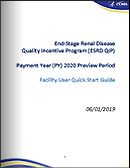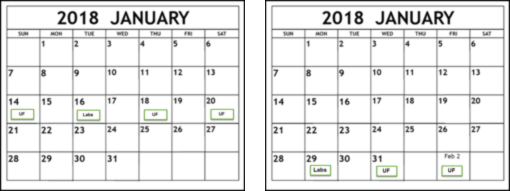September 2019 CROWNWeb NEWS

In This Issue:
Download the PDF.
View past Newsletters.
Upcoming Events:
New User Training
September 10 • 2-3pm
Web Resources:
Training Materials and Documents
CMS Conditions for Coverage for ESRD Facilities

The new End-Stage Renal Disease Quality Incentive Program (ESRD) Facility User Quick Start Guide is now available in PDF.

ESRD Systems Data Accuracy
During the August Town Hall event, the Outreach, Communication, and Training (OCT) team provided attendees with an overview on the importance of ESRD Systems Data Accuracy. The purpose was to provide current and new users, with background information pertaining to the systems along with items that will assist users with keeping facility and patient data clean.
The session began with the ESRD Quality Reporting System’s vision statement and its importance: “To improve healthcare outcomes for ESRD Patients by providing Dialysis Providers with a National Patient Registry & Quality Improvement Tool that utilizes current best practices to ensure the quality of care for Patients by supporting meaningful measures and reducing burden, while maintaining data accessibility & accuracy for public reporting of quality information in accordance with policy.” This is accomplished by breaking the vision down to the: who, what, why, and the end goal, as described below.
WHO: Dialysis Providers, CMS, and the ESRD Patients
WHAT: National Patient Registry (CROWNWeb) & Quality Improvement Tool (ESRD QIP) to collect, process, and report accurate data on the quality of healthcare
WHY: Ensuring the quality of care for ESRD Patients, supporting meaningful measures, and maintaining data accessibility & accuracy for the public reporting of quality information
GOAL: Delivering accurate data and advanced analytics using current best practices & industry standards, while reducing the burden on the facility & corporations
The entire vision and goal can be accomplished with the EQRS shared values of System Availability, Data Quality, Data Accessibility, and Data Accuracy. These values are engrained into each user as they complete the tasks of keeping facility summary information, patient attributes, treatment information, and clinical values up to date. The previous tasks are related with consistent PART verification and the completion of Notification and Accretion alerts.
To view the complete slide deck or the recording, please visit the Events Page.
Ultrafiltration
The Center for Medicare & Medicaid Services (CMS) is looking for the amount of fluid removed during all dialysis treatments a patient received during the week that the labs were drawn for the Kt/V calculation. This valuable clinical information is entered in the Adequacy section of the clinical screen. After adding the Kt/V to the Adequacy section, users may select the “add” button which prompts the system to provide a pop-up screen for the entry of the Ultrafiltration information. Once the required information has been entered, a user may select the “done” button and be taken back to the Ultrafiltration screen. From that screen additional Ultrafiltration information from the Kt/V lab draw week can be added by following the above steps again when selecting the “add” button. If all information has been entered, users may continue entering additional clinical information in other fields. The two calendars below provide different examples on when Ultrafiltration information should be added in association with the Kt/V draw.

Clinical Closures
Clinical closure dates apply to all Collection Types (Hemodialysis; Peritoneal Dialysis). Additionally, clinical data submissions apply to all submission methods.
| Reporting Month | Clinical Closure Date | |
| August 2019 Clinical Month | October 31, 2019 at 11:59 PM PT | |
| September 2019 Clinical Month | December 2, 2019 at 11:59 PM PT | |
| October 2019 Clinical Month | January 2, 2019 at 11:59 PM PT | |
The information included as part of this newsletter is current as of the date of release.
